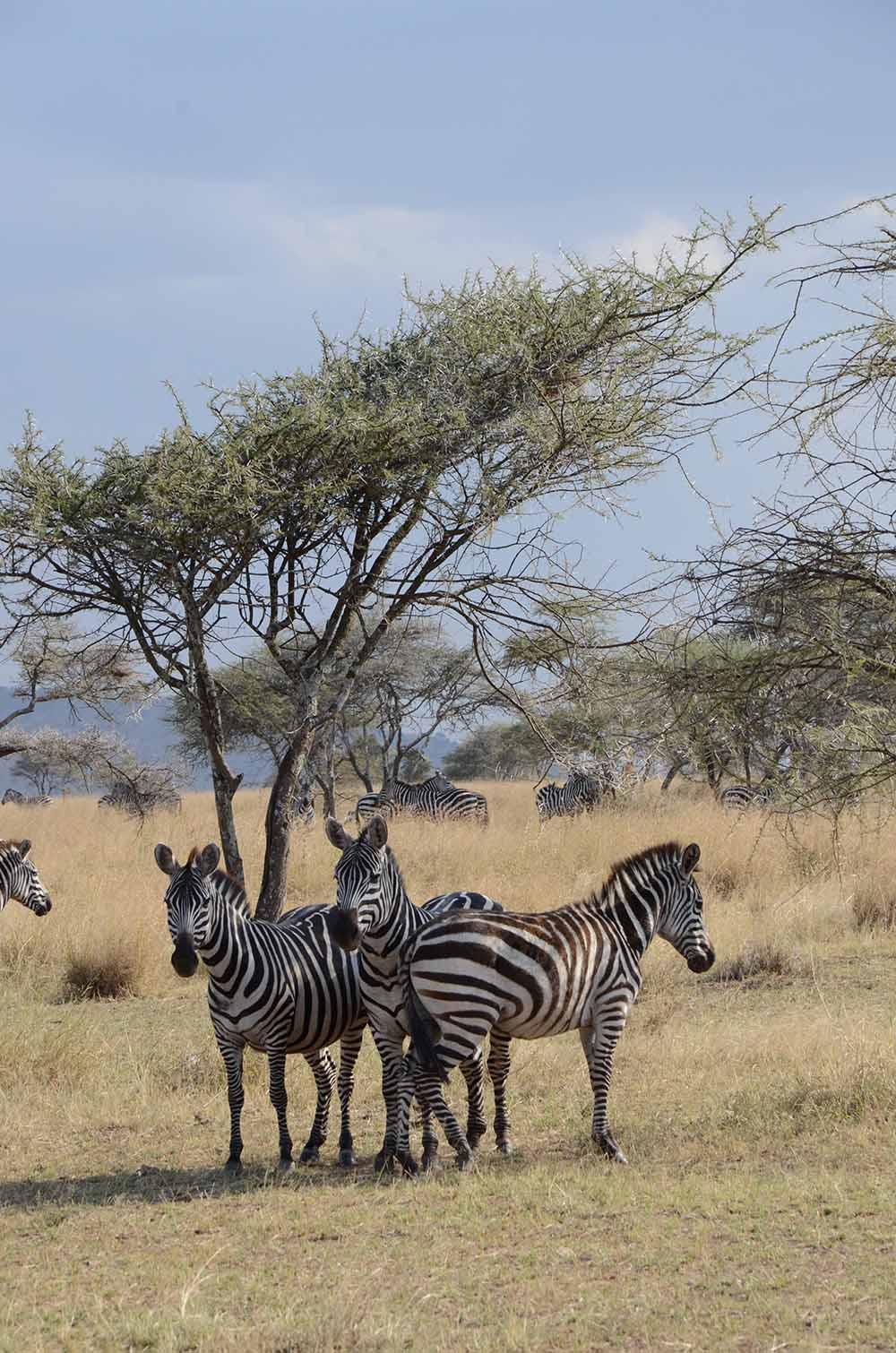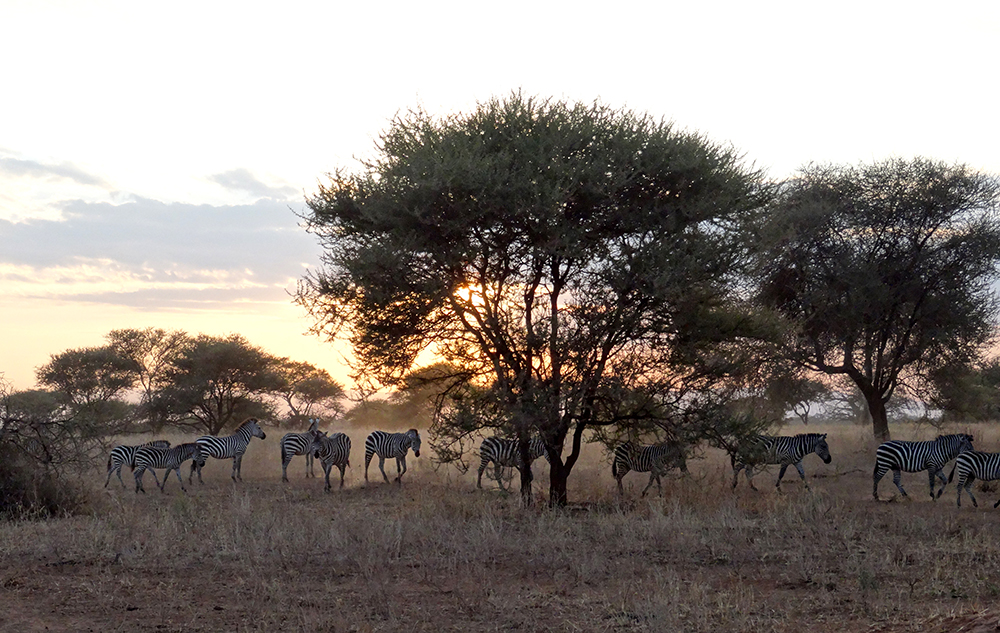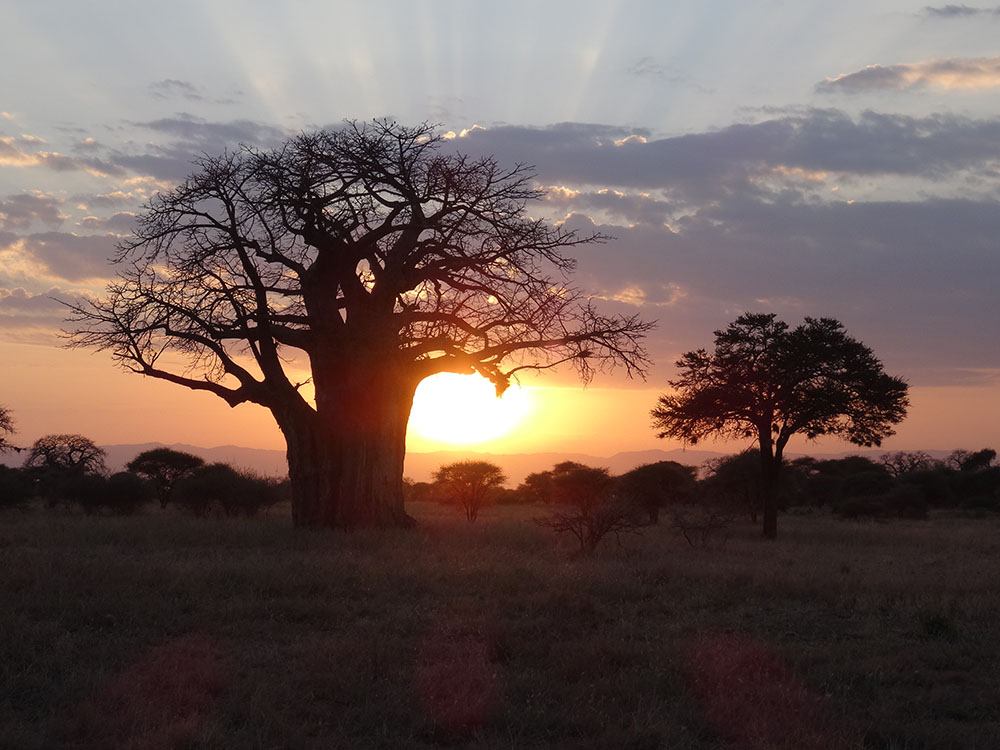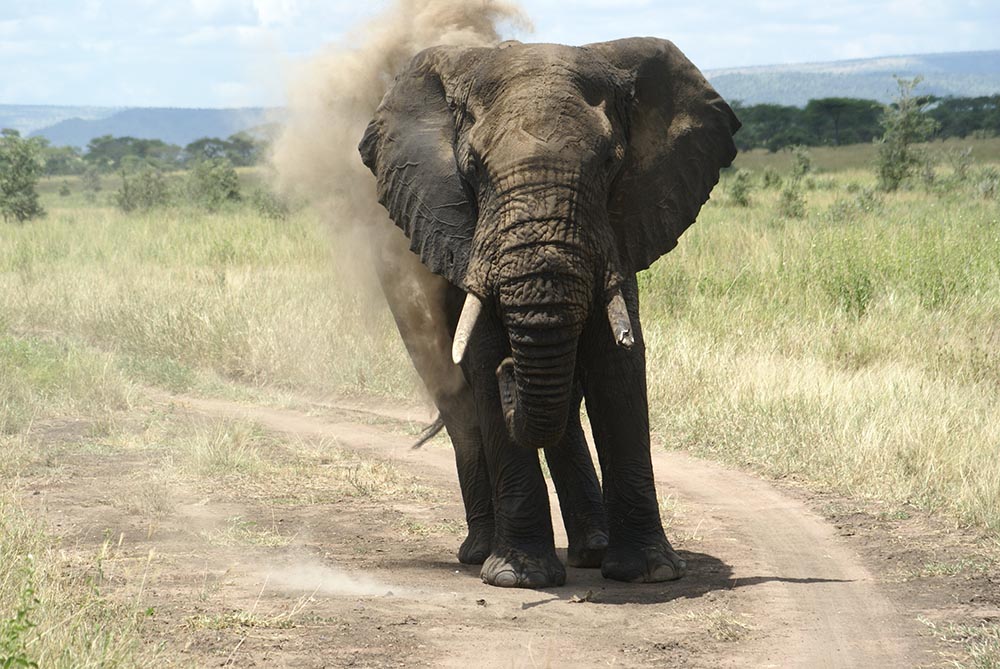The Serengeti is a savannah, which stretches from northern Tanzania, east of Lake Victoria, to southern Kenya (Africa) and covers an area of around 30,000 km².
Extensive, flat grass steppes in the south contrasts slightly hilly, wooded plains in the north. The central savannah is almost treeless, in the southeast the Ngorongoro Conservation Area rises up, shaped by volcanism (world natural heritage since 1979).
The highest mountains are about 1,850 m above sea level, lower parts of the savannah reach "down" to about 950 m.
The Serengeti area encloses the "Serengeti National Park", which with its 14,763 km² is one of the largest and most famous national parks in the world. In addition, it has been part of the UNESCO World Heritage Site since 1981. Bernhard Grzimek's documentary "Serengeti mustn't die" won an Oscar in 1960.


More than 1.6 million herbivores and thousands of predators live there. Common animals in this region are wildebeest, gazelles, zebras and buffalo. The migration of the large herds of wildebeests is a unique experience.













































